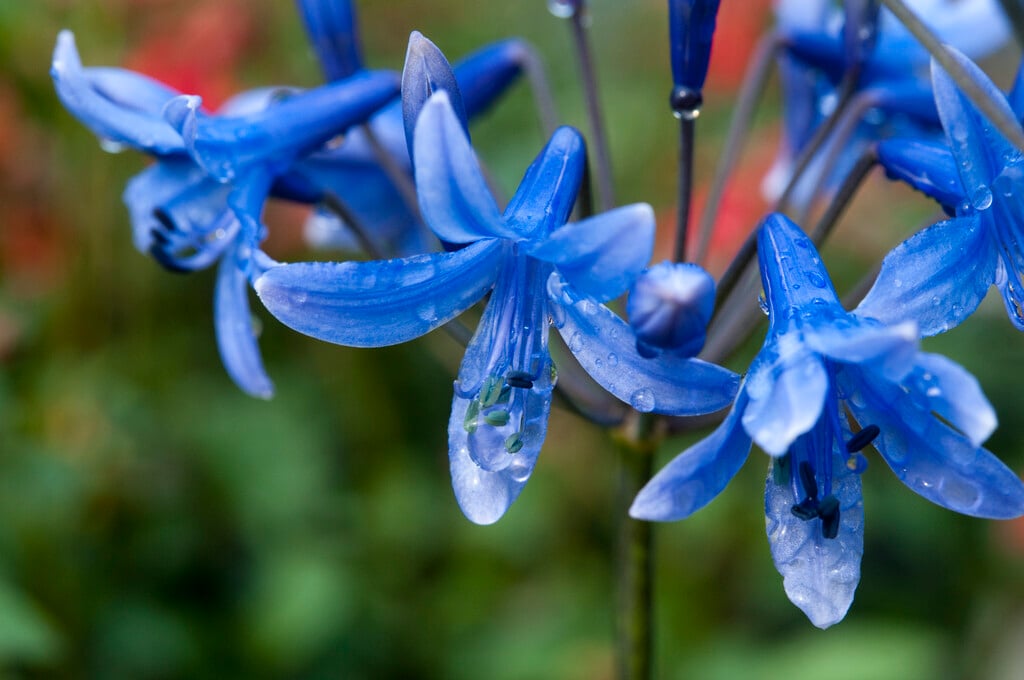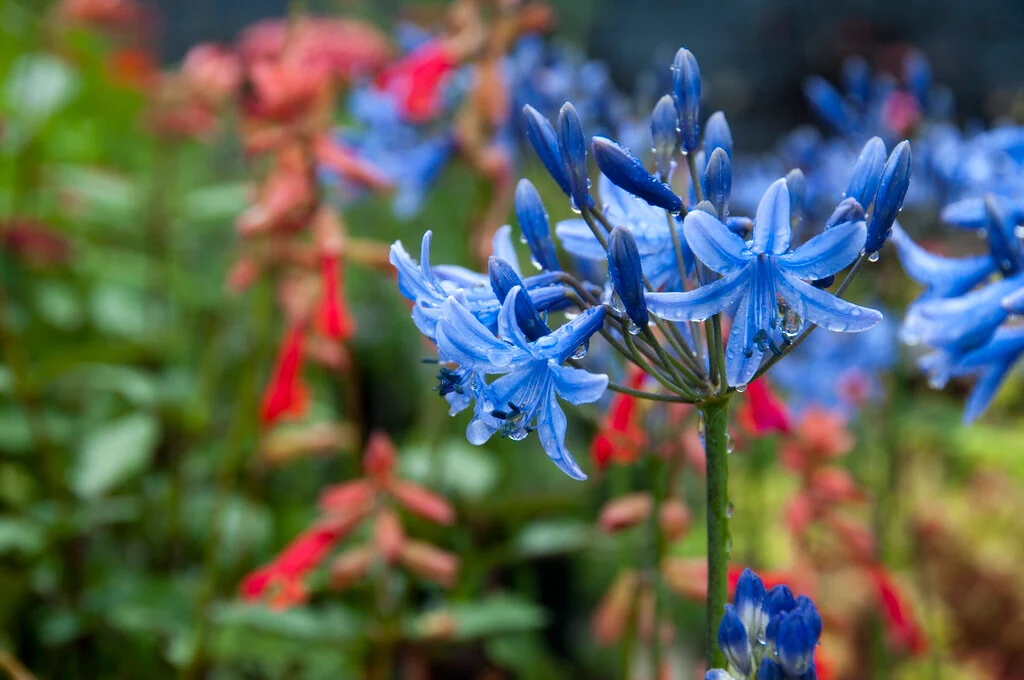Introduction
The blue lily of the valley is an incredible botanic miracle with its ethereal appearance and soft and fragile flowers. Contrary to the classic white type, the blue lilies of the valley are a dark blue shade and are considered very striking that one can not help but stare at or admire it. It is a loved gem, as it is a rare plant among the horticulturists and flower lovers.
Botanical Classification and Characteristics
The blue lily of the valley is also a color variant of the Convallaria majalis species which grow in woodland areas, usually in a shady environment. It is a perennial plant, which is characterized by:
- Stems that are arching out of rhizome roots
- Slender, pointy-shaped leaves (lanceolate) and a waxy finish
- Blue flowers which are shaped like bells and almost always grow in groups
- a powerful sweet aroma which increases during the flowering season
Although the plant has been named like a lily, it is not a lily hence is not a member of the Liliaceae family but possesses various aesthetic features possessed by members of the Liliaceae family.
The Symbolism and Cultural Significance
Lily of the valley is of blue color, its symbolism is numerous-layered and cuts at cross-cultural and cross-era boundaries. It is commonly linked up with:
- Cleanness and meekness, because of its low humble flowers
- Love and devotion (including love and devotion used in wedding bouquets as symbolizing fidelity)
- Rebirth and renewal, which causes it to be a common spring festival plant.
To the folklore, it is thought of as a source of protection and good luck, particularly when planted at doorways or in sacred areas.
Growing Conditions and Habitat Preferences
Blue lily of the valley has very specific conditions that it enjoys and it is almost the same conditions that it sees in the wild. To grow optimum, one needs the following;
Soil Requirements
- Fine, loamy well-drained soil
- Very weakly acid to neutral PH levels
- Organic compost or leaf mold enriching
Light and Temperature
- Does better in partial shade than full Shade
- Needs a cool weather and evenly spread precipitations
- Difficulties with dry or excessively damp climate Convulsions
Watering and Maintenance
- Requires regular moisture in the active growing season
- It is advised to have mulching in order to conserve moisture of the soil and to kill weeds
- Little pruning needed; die back naturally occurring following blossom

Propagation Techniques
Cultivation The blue lily of the valley is mainly propagated by rhizome division. The disadvantage is that they are scarcely used because of poor germination rate and lengthy dormancy of seeds. These should be done ideally:
- Division in young autumns of mature rhizomes
- Planting them in a low depth again (1-2 inches)
- Leaving enough spacing between seeds (6-8 inches apart) so not to over crowd the flowers.
- Immediate watering Watering when planting Seedling bed Raised bed
The first year needs to be taken care of properly because the plant requires some time to develop its root system before showering the place with blooms.
Seasonal Blooms and Floral Behavior
The blue lily of the valley is the plant that usually flowers at the end of May and June. Its perennial life cycle of the plant is contrasted with the temporal blossom of the flower. A healthy plant will also flower and in a year at least, as long as the environment around it is still. The following are the blooming characteristics:
- Bell-shaped flowers clustered together in 4-10 flowers in a stem
- The flowering time: 2-3 weeks
- The minute differences of colored, are delicately discerned between faint blue, and darker indigo
Pollinating insects like bees and butterflies are lured to its flowers hence it can help increase the biodiversity of any garden.
Toxicity and Handling Precautions
The blue lily of the valley looks so fragile but when taken into the body it is one of the most toxic plants. Every-single-part of the plant including leaves, stems, flowers, and roots, possesses cardiac glycosides that can cause critical health complications. Causes of poisoning are:
- Vomiting and nausea
- Irregular heartbeat
- Visual disturbances
- Serious conditions may result in death in severe cases.
When planting and pruning, gloves ought to be used. It is not advisable in a house with pets or small children unless it is well fenced.

Applications in Landscape Design
The blue lily of the valley looks very pretty and smells nice so it is good to be used in:
- Forest playgrounds and parks amid trees
- Planting in the under story under trees and shrubs
- Designs of gardens that are of naturalistic with resemblance to forest floor designs
- Moist and shaded areas ground cover options
It grows compact and is highly foliated; its growth is therefore good erosion control under slope soils and in shady embankments.
Conservation and Rarity
Blue lily of the valley has always been a rare horticultural cultivar[one with a development usually made with selective breeding]. This has been the result of its rarity:
- The demand by collectors and botanical gardens High demand among collectors and botanical gardens
- Low supplies in market (nurseries)
- Attempts were made to conserve the diversity by controlled reproduction
Use of plants that are ethically grown in nurseries without mass harvesting of plants in the wild is also essential.
Differences Between Blue and Traditional White Varieties
While both color variants share the same genus and growth patterns, notable distinctions include:
| Feature | Blue Lily of the Valley | White Lily of the Valley |
| Color | Shades of blue to violet | Pure white |
| Availability | Rare, selectively bred | Commonly found |
| Ornamental Value | Exotic and premium | Classic and traditional |
| Market Price | Higher due to rarity | More affordable |
The blue variety with its unique looking nature is often used by gardeners who want to make a bold botanical statement.
Where to Find and Purchase
It might be difficult to obtain the blue lily of the valley. It is normally sold by:
- Rare perennial focus specialty nurseries
- The botanical conservatories where there is a seasonal division of rhizones
- Internet plant stores, in particular cross-regional shippers
Make sure that a given supplier is certified and offers phytosanitary documents, particularly when ordering abroad.
Floral Arrangements and Gifting Traditions
The blue lily of the valley is extremely appealing in luxurious flower bouquets. It is appropriate to attribute to it:
- Particularly royal or theme weddings, the wedding bouquest.
- Exotic flower arrangements
- The gifts as an act of symbolizing unending love associated with anniversaries
Because the flower only lasts a few days, it is commonly used in preservation, or in bouquets with flowers with more stamina such as peonies or hydrangeas.
Conclusion
Blue lily of the valley is not simply a flower; it is an alive element of grace, of unicity, of the symbol. Vivid blue flowers and its sweet smell contribute to making any environment rich. It requires certain conditions and handling and the reward is a flower masterpiece that other flower experts would not easily match. To gardeners and collectors who appreciate anything novel and rare, the blue lily of the valley is quite a memorable gem in the casket of natural most precious flowers.

